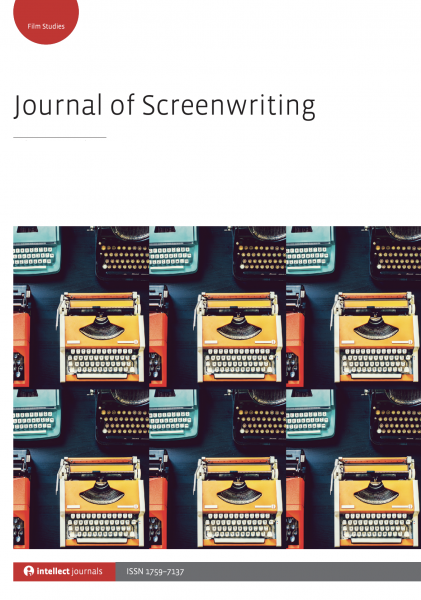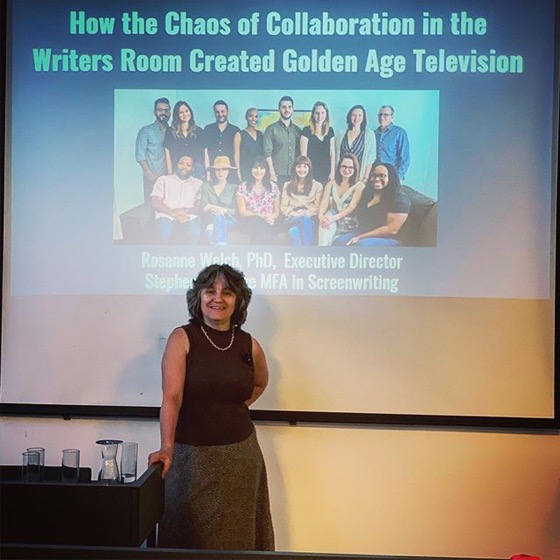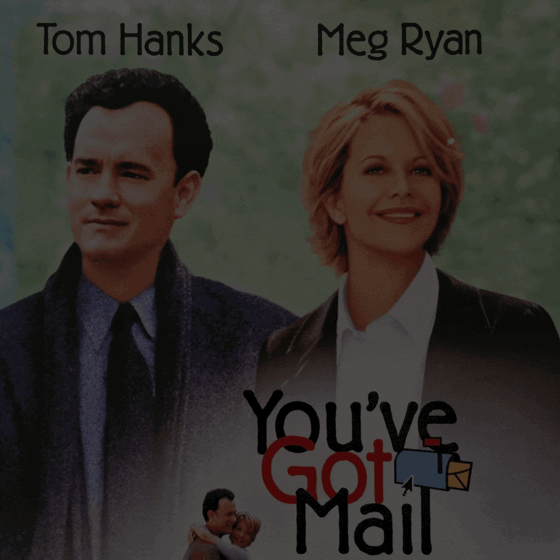Highlighting the articles in the past editions of the Journal of Screenwriting, of which I am the Book Reviews Editor. Hopefully these abstracts will entice you to did a little deeper into the history and future of screenwriting. — Rosanne
Screenwriting and emotional rhythm by Ian David
Recent advances in neuroscience have begun to unravel the part played by emotion in decision-making and creativity. All storytellers rely on emotion, but the screenwriter, conveying the essential narrative and technical information required to make a film, carries a unique burden. Screenplays must act as a bridge from the author to the audience, describing the narrative’s capacity to evoke emotion through action and image. In discussing a screenplay, the narrative is usually assessed in terms of its characters, plot, subplots, theme, dialogue, tone, style, etc. Yet, emotion, the quality that determines the screenplay’s (and ultimately the film’s) overall effect, is often poorly understood. This paper proposes Emotional Rhythm – that subliminal sequence of emotions underpinning all the dramatic components – as a means of evaluating the screenplay’s potency as it relates to the construction of the narrative.
The Journal of Screenwriting is an international double-blind peer-reviewed journal that is published three times a year. The journal highlights current academic and professional thinking about the screenplay and intends to promote, stimulate and bring together current research and contemporary debates around the screenplay whilst encouraging groundbreaking research in an international arena. The journal is discursive, critical, rigorous and engages with issues in a dynamic and developing field, linking academic theory to screenwriting practice.
Get your copy and subscription to the Journal of Screenwriting Today!
* A portion of each sale from Amazon.com directly supports our blogs
** Many of these books may be available from your local library. Check it out!


![An update – Thanks for 2600+, Find videos on YouTube, and San Diego Who Con talks announced via TikTok [Video]](https://rosannewelch.com/wp-content/uploads/2021/05/rmw-update-20210524.gif)
![13 Something’s missing in writer’s rooms from How The Chaos Of Collaboration in the Writers Room Created Golden Age Television [Video]](https://rosannewelch.com/wp-content/uploads/2021/05/srn-porto-13.jpg)



![Dr. Rosanne Welch Speaks at the 2021 Stephens College MFA in TV & Screenwriting Commencement [Video]](https://rosannewelch.com/wp-content/uploads/2021/05/rmw-2021-mfa-commencement.jpg)


![TikTok Response to comment from @itsmeimgarbage : Polly Platt [Video]](https://rosannewelch.com/wp-content/uploads/2021/05/polly-platt-tt.gif)

![12 Kenny Johnson from How The Chaos Of Collaboration in the Writers Room Created Golden Age Television [Video]](https://rosannewelch.com/wp-content/uploads/2021/05/srn-porto-12.jpg)
